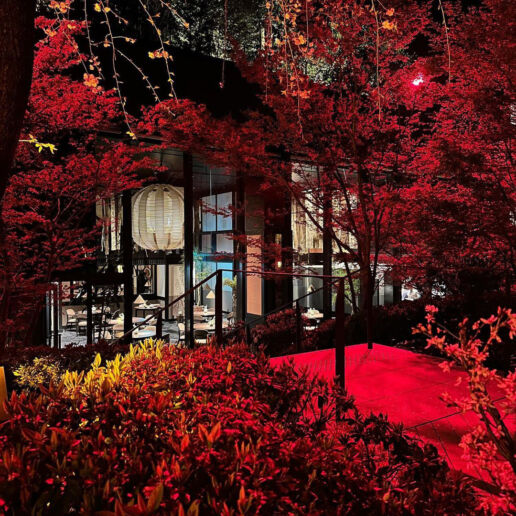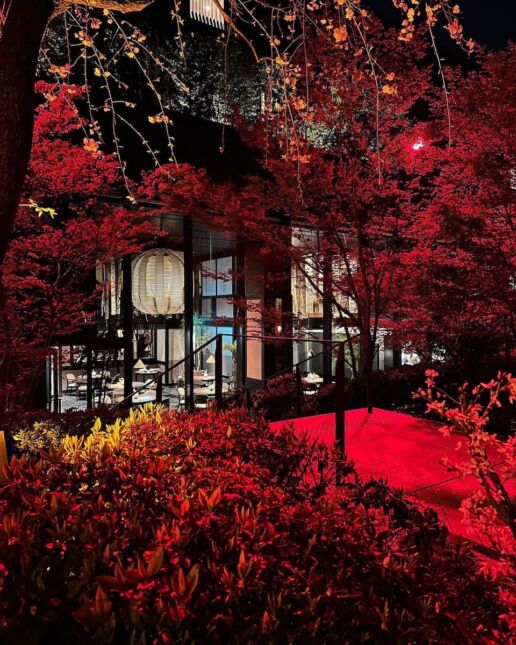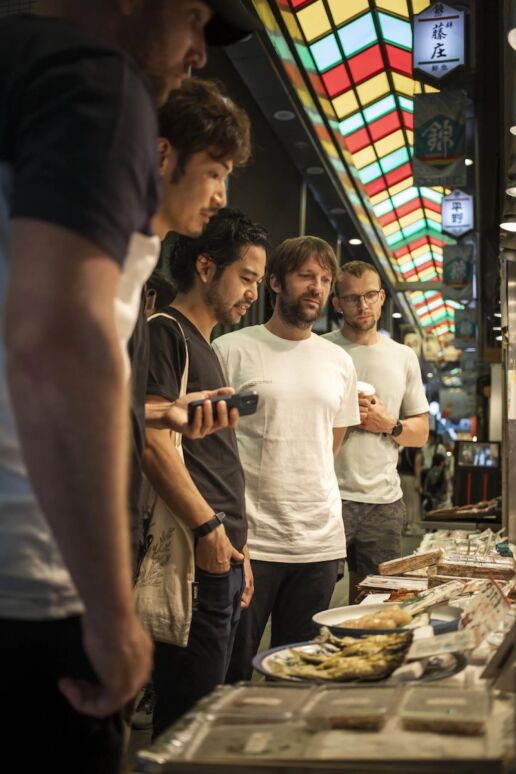NOMA 3.0’S KYOTO TAKEOVER
Noma Kyoto is currently welcoming guests in Japan—and it could be your last chance to experience one of the world’s most famous restaurants.
Even if you don’t keep close tabs on the world of fine dining, you’ve undoubtedly heard the name Noma at some point. Located in Copenhagen, the restaurant’s been in business for nearly 20 years, setting a new standard in the gastronomy world through its innovative dishes as well as the countless awards it’s received to date. In fact, Noma’s emphasis on using only local and seasonal ingredients—then transforming these ingredients with unorthodox techniques into flavors that far exceed expectations—led to the birth of the “New Nordic Cuisine” movement in Denmark. Dining here required reservations not weeks or months but years in advance. Given this massive fame, Noma’s announcement in January that it would be shutting its doors at the end of 2024 naturally sent shockwaves throughout the world of gastronomy. Dubbed “the end of fine-dining” by Wired, the news was extensively covered by many publications, including The New York Times and Bon Appetit. Many looked for the reason behind this surprising closure in the past as well the modus operandi of Noma, and therefore of Chef René Redzepi.
Noma’s unstoppable rise
Opened in 2003 by Claus Meyer and René Redzepi, Noma succeeded in gaining the attention of gourmets in a short amount of time thanks to its focus on local ingredients. Listed among the world’s top restaurants for nearly 15 years, with three Michelin stars to its name, Noma has also managed to top the World’s 50 Best Restaurants list a total of five times. Offering a tasting menu priced at $500 per person, Noma also promised to serve as a school for many young chefs looking to prove themselves in the industry. Yet the biggest factor in Noma’s success was undoubtedly its owner-chef René Redzepi. Considered one of the most influential chefs in recent years, Redzepi has been in the kitchen since the age of 15. Currently aged 45, the chef is perhaps one of the best witnesses to the changing culture in fine-dining restaurants’ kitchens over the past 30 years. In a 2015 essay he wrote for Lucky Peach—a journal of food writing published quarterly by McSweeney’s—Redzepi compared his own culinary training to the present day, openly admitting that, despite all his success in the world of gastronomy, by today’s standards he was a bad boss who verbally and physically bullied his staff. Although the chef has since focused on self-development, both the challenging work conditions and the economic challenges felt around the globe have been threatening Noma’s survival. In the announcement he made in January, Redzepi cited the financial and emotional unsustainability of fine-dining as the main reason behind the decision to close Noma.
Winds of change
As those surprised at the news of the uber-successful Noma’s closure might imagine, there isn’t a singular reason behind the decision. In fact, Noma isn’t alone, as many other high-end restaurants are going through challenging times, particularly after COVID. In addition to having a long-lasting impact on purchasing behavior all around the world, this era has also seen the rise of new sensibilities and discussions surrounding working conditions as well as work-life balance. In today’s climate where hiring unpaid interns is increasingly frowned upon at many organizations, it’s not reasonable to expect young would-be chefs to work under stressful conditions and without compensation for 16 hours a day—and at restaurants targeting the ultra-luxury segment, no less. Interviews with former Noma employees over the years have painted a clearer picture of the conditions, which are now seared in everyone’s memory thanks to the popularity of productions such The Bear and The Menu in recent years. When you add to all this Gen Z’s propensity to call out authority figures and institutions on social media for their bad behavior, it becomes obvious why Redzepi finds the status quo unsustainable. In recent years, Noma took a step in the right direction when it announced that it would start paying interns; however, according to media coverage, this decision added at least $50,000 to the restaurant’s monthly expenses. When you factor in the need to source high-quality ingredients, protect employee rights, and the rising costs required to achieve both, it simply became impossible for Noma to go on as is.
What can we expect from Noma in the future?
According to Redzepi, Noma will continue on its journey as a brand rather than a restaurant, in an iteration he calls “Noma 3.0.” In doing so, he seeks to operate a full-time food lab where new products and flavors are developed and sold to customers directly via e-commerce. Known as Noma Projects, this initiative isn’t all Redzepi has under his sleeve: we will also see pop-up restaurants in the 3.0 era. The latest such project is Noma Kyoto, which has currently taken up residence at Ace Hotel Kyoto. Noma Kyoto isn’t the brand’s first experience in pop-up restaurants, with temporary locations set up in cities like London and Tulum in previous years. Even though the new Noma pop-up also utilizes local ingredients, the team behind it emphatically states that this is not a Japanese restaurant. Noma Kyoto will remain open until May 20, serving lunch and dinner from Wednesday through Saturday. Reservations are fully booked at the moment, but you can get your name on the waitlist and—if you’re lucky—you, too, can enjoy the Noma experience at 775 euros (minus service charge) per person.





